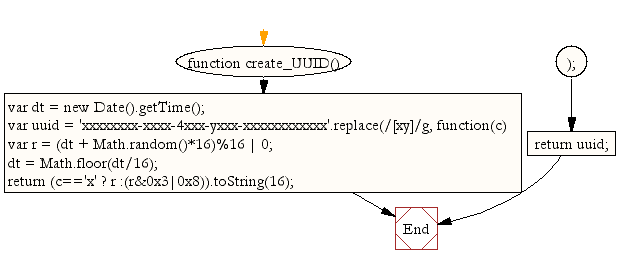
This UUID contains all zeros for integers. First released in 1991 by Guido van Rossum, Python makes use of indentation and whitespace to delimit different blocks of code. Versions 3 and 5 are well suited for use as unique identifiers for information and data within a namespace of a system.Īn extra version of UUID, and a special case, is the Nil UUID. Python is a very popular, interpreted, dynamically typed, object-oriented programming language. However, it is generated using Secure Hash Algorithm 1, or SHA-1, as opposed to MD5, which version 3 uses for hashing.

However, there are still enough UUID combinations to avoid the possibility of a collision. The Version 4 UUIDs produced by this site were generated using a secure random number generator. More bits are used in this version, so there are fewer UUID combinations. A Version 4 UUID is a universally unique identifier that is generated using random numbers. These can be created using a random or pseudo-random number generator. Although the random UUID uses random bytes, four bits are used to indicate version 4, while two to three bits are used to indicate the variant.
#V4 UUID GENERATOR GENERATOR#
Information labeled with UUIDs by independent parties can therefore be later combined into a single database, or transmitted on the same channel, with a negligible probability of duplication.Īdoption of UUIDs and GUIDs is widespread, with many computing platforms providing support for generating them, and for parsing their textual representation. This free online UUID v4 generator (random UUID) creates version-4 universally unique identifiers according to RFC 4122.


Thus, anyone can create a UUID and use it to identify something with near certainty that the identifier does not duplicate one that has already been, or will be, created to identify something else. Since Version 4 UUIDs use a random set of generated numbers, duplication is. It is generated using random numbers and no logic, which is why Version 4 UUIDs are not typically used if you need to generate a unique ID that is time-sensitive.
#V4 UUID GENERATOR SOFTWARE#
While the probability that a UUID will be duplicated is not zero, it is close enough to zero to be negligible. Version 4 UUIDs are another common unique identifier used by software developers, usually when debugging.
#V4 UUID GENERATOR REGISTRATION#
When generated according to the standard methods, UUIDs are for practical purposes unique, without depending for their uniqueness on a central registration authority or coordination between the parties generating them, unlike most other numbering schemes. The term globally unique identifier (GUID) is also used.

A universally unique identifier (UUID) is a 128-bit number used to identify information in computer systems. UUID ( '' ) > # convert a UUID to a string of hex digits in standard form > str ( x ) '00010203-0405-0607-0809-0a0b0c0d0e0f' > # get the raw 16 bytes of the UUID > x.


 0 kommentar(er)
0 kommentar(er)
